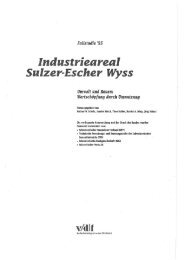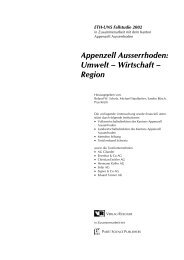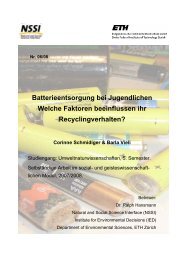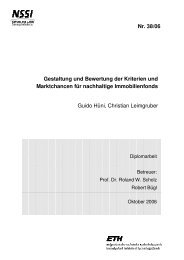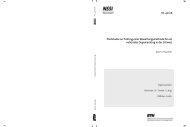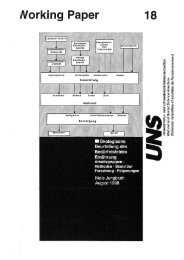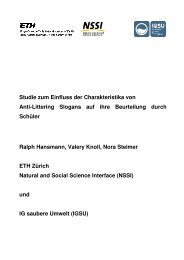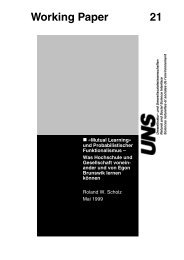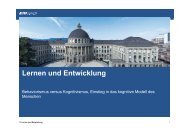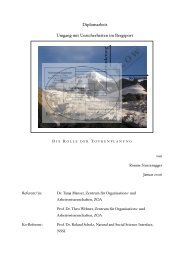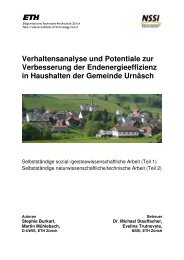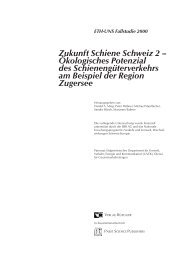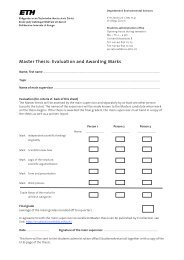Non-road fuel consumption and pollutant emissions ... - BAFU - CH
Non-road fuel consumption and pollutant emissions ... - BAFU - CH
Non-road fuel consumption and pollutant emissions ... - BAFU - CH
You also want an ePaper? Increase the reach of your titles
YUMPU automatically turns print PDFs into web optimized ePapers that Google loves.
<strong>Non</strong>-<strong>road</strong> <strong>fuel</strong> <strong>consumption</strong> <strong>and</strong> <strong>pollutant</strong> <strong>emissions</strong> FOEN 2008 32<br />
less a tolerance of 10%. For boats, the Swiss Federal Laboratories for Materials Testing<br />
<strong>and</strong> Research EMPA has produced detailed information on limit value utilisation,<br />
which forms the basis for specifying the corresponding emission factors. The emission<br />
factors for ships/boats that are not subject to emission regulations (i.e. those manufactured<br />
before 1995 or equipped with small engines) are based on assumptions, in some<br />
cases taking into account emission levels of other machine categories into account.<br />
The emission factors for machines not subject to emission regulations correspond to<br />
the emission limit recommendations of the UIC. The emission factors for much older<br />
engines (year of manufacture prior to 1982) are additionally based on emission factors<br />
for diesel-powered machines with the same year of manufacture. The emission factors<br />
for engines manufactured after 2006 correspond to the EU limit values from EU IIIa,<br />
less a tolerance of 10%.<br />
Railway machinery<br />
Table 7 lists the emission levels of two types of railway machinery that are widely used<br />
by Swiss Federal Railways (SBB) <strong>and</strong> for which measurement results exist. The figures<br />
in parentheses represent the corresponding emission factors according to the UIC. Only<br />
the figures for nitrogen oxides are fairly similar. With respect to HC <strong>and</strong> CO <strong>emissions</strong>,<br />
locomotive type Am 843 has a significantly lower level than the UIC figure (<strong>and</strong> is also<br />
well below the EU emission limits, which have only been applicable since 2006). Since<br />
corresponding data do not exist for all other types of railway machinery, the emission<br />
calculations are nonetheless based on the UIC emission factors, particularly since<br />
evaluations of vehicles operated by German Railways (DB) (IFEU 2003) show that<br />
levels for the various vehicles vary considerably.<br />
Tab. 7 > Emission levels of two railway machines widely used by Swiss Federal Railways (SBB)<br />
Railway<br />
machine<br />
Tm 234<br />
Machine type<br />
Railway<br />
tractor<br />
Engine Emission Number<br />
Emissions factors (g/kWh)<br />
rated power stage<br />
HC CO NOX PM<br />
550 kW UIC-I 98 1.1 (0.8) 4.0 (3.0) 7.0 (12.0) 0.15 (0.5)<br />
Am 843 Locomotive 1500 kW UIC-II 73 0.2 (0.8) 0.7 (3.0) 8.9 (9.5) 0.1 (0.25)<br />
The figures in parentheses represent the UIC emission factors (as per Tab. 33 on page 133).<br />
4.3.4 Sub-segments<br />
For the purpose of allocating machines to emission stages, the main segments (machines<br />
distinguished by machine type, engine type <strong>and</strong> engine-power class) are divided<br />
into sub-segments that comprise machines with a similar year of manufacture (according<br />
to emission stages). The sub-segments thus cover machines of all years of manufacture<br />
in which a certain emission stage applied.



